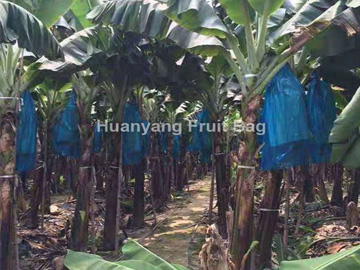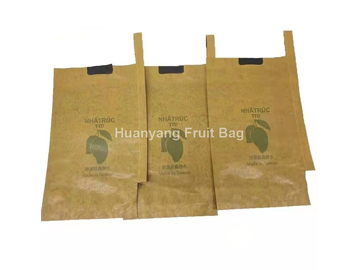Do Fruit Protection Bags Work?
Fruit bagging is mainly done by putting young fruit into food bags by covering the bag with a strap or a clip on the stalk. Isolating the fruit from the external environment protects it from mechanical or biological damage during development, especially in areas where the fruit is susceptible to fungal, bacterial, insect and even bird infestations.
feel free to contact us is mainly done by putting young fruit into food bags by covering the bag with a strap or a clip on the stalk. Isolating the fruit from the external environment protects it from mechanical or biological damage during development, especially in areas where the fruit is susceptible to fungal, bacterial, insect and even bird infestations.
Fruits are a source of many compounds essential to the body and are included in a balanced and healthy diet. Although low in calories, fruits and vegetables are nowadays of interest for their nutritional value as a source of health-promoting vitamins, fiber, minerals, phytochemicals and bioactive compounds that help prevent cancer and cardiovascular disease.
Adequate intake of fruits and vegetables can replace harmful saturated fats and sugars in the body and enhance healthy nutrition and dietary fiber. The Food and Agriculture Organization of the United Nations (FAO) and the World Health Organization (WHO) recommend consuming at least 400 grams of fresh fruits and vegetables daily. However, the physicochemical properties of fruits are strongly influenced by environmental factors.

Banana Bags
The bagging technique, first used in Japan for pears and grapes in the 20th century and now widely used in Asian countries (Japan, China, Korea), Australia and the United States, protects fruits from their surroundings (mainly light and pathogens, then stresses related to temperature, water/humidity and air movement) and carries some kind of barrier - a fruit a physical barrier around it.
In fact, bagging is mainly the packing of young fruits into food bags by covering them with straps or clips that are clipped to the fruit stalks. Isolating the fruit from the external environment protects it from mechanical or biological damage during development, especially in areas where the fruit is vulnerable to fungal, bacterial, insect or even bird infestation.
The aim is to obtain fruits without external defects and with the desired shape and color, depending on the regional or national consumer preferences for the particular fruit. Thus, the expected color variation can correspond to a decrease or increase in color, or even a more uniform color itself, compared to non-pocketed fruits. This is particularly important in markets where aesthetic factors represent an important competitive factor, such as Japan.

Mango Fruit Bags
2. Effect of bagging on fruit quality
Bagging techniques are specifically used to improve the appearance and quality of fruits, especially in Asia. There are different types of bags/bagging materials. Initially, in Korea, newspaper bags were used to wrap fruits to protect them from pests and diseases, but around 1985, artificially manufactured bags were introduced.
Although bag-making was costly and labor-intensive to practice, the new material was effective in making bags. Bags around fruits can control sunlight, temperature, humidity, evaporation and mechanical damage. Bagging also regulates harvest time, it controls pest infestations, especially fruit flies, and minimizes pesticide residues, which is especially important during the rainy season Therefore, bagging is an excellent way to produce fruit with very low inputs or pesticide residues.
In addition, bagging can facilitate the production of high value organic fruit, as demonstrated by Allran et al. in organic peaches in the southeastern United States showing similar fruit quality (size, Bailey's sugar, acidity) between bagged and control fruit, bagging prevents various pests and diseases, but has little effect on organic peach quality. Organic guava fruits after bagging treatment. In addition, for organic fruits, bags can be doubled or, in conventional agriculture, impregnated with insecticide [or sprayed with insecticide/fungicide before bagging.
Bagging can determine many changes in the physiology of the fruit and maintain its characteristics, with special attention to tropical fruits, which have many applications and other types of fruits are often found.